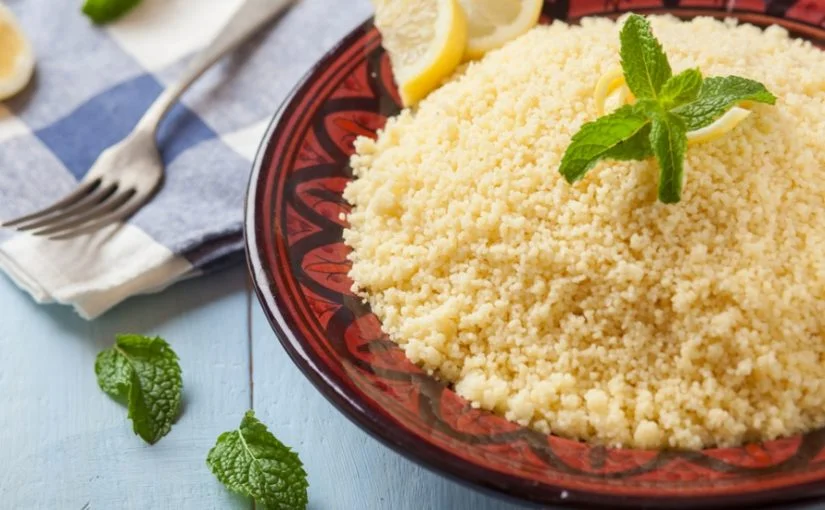Cuşcuş, often referred to as couscous in English, is a staple food that has delighted palates for centuries. Originating from the Berber regions of North Africa, this versatile and nutritious dish has transcended cultural boundaries to become a beloved culinary delight worldwide. Its simplicity in preparation, combined with its ability to absorb a variety of flavors, makes cuşcuş a favorite in many kitchens. In this article, we will delve into the origins, nutritional benefits, preparation methods, and cultural significance of cuşcuş, highlighting why it continues to be a cherished dish in both traditional and modern cuisine.
The Origins of Cuşcuş
Cuşcuş has its roots in the Berber culture of North Africa, with historical records dating back to the 9th century. Historians believe the indigenous people of the region, particularly in present-day Morocco, Algeria, Tunisia, and Libya, used cuşcuş as a dietary staple. The name “cuşcuş” comes from the Berber word “seksu,” meaning well-formed or rounded, describing the dish’s granular texture. Although traditional cuşcuşs were made from millet, wheat gradually became the primary grain used due to its widespread availability and adaptability.
Nutritional Benefits
One of the reasons cuşcuş has endured as a popular food item is its impressive nutritional profile. Made from semolina wheat, cuşcuşs is a good source of complex carbohydrates, which provide sustained energy. It also provides a rich source of fiber, which helps with digestion and promotes a sense of fullness. For those seeking a healthier alternative, whole wheat cuşcuşs offer even more fiber and nutrients. Its low fat and calorie content make it a suitable option for those managing their weight or looking for a balanced diet.
Preparation Methods
The preparation of cuşcuş can be both simple and elaborate, depending on the desired outcome and cultural practices. Traditionally, cooks steam cuşcuşs in a special pot called a couscoussier. They use the base of the pot to cook a stew, often with meat, vegetables, and aromatic spices, while the perforated top part allows steam to cook the cuşcuşs grains. This method ensures fluffy and evenly cooked grains that absorb the flavors of the stew below.
In modern kitchens, you can quickly prepare cuşcuş by pouring boiling water or broth over the grains and covering them to steam for a few minutes. Fluffing the cuşcuşs with a fork afterward helps separate the grains and enhance their texture. You can serve it as a side dish, a main course with added protein and vegetables, or even as a base for salads.
Cultural Significance
Cuşcuş holds a special place in the culinary traditions of North Africa and the Mediterranean. People often associate cuşcuşs with family gatherings, celebrations, and religious festivals. In Morocco, they traditionally serve cuşcuşs on Fridays, the holy day of the week, symbolizing unity and blessings. Similarly, in Tunisia, it is a customary dish during Ramadan and special occasions. The communal aspect of sharing a large dish of cuşcuşs fosters a sense of togetherness and hospitality.
The cultural significance of cuşcuş extends beyond its place of origin. As it spread across the Mediterranean and into Europe, it became integrated into various cuisines, each adding its unique twist. In France, cuşcuşs is popular in many restaurants and homes, often paired with lamb and a rich broth. In Italy, it is sometimes used in seafood dishes, highlighting its adaptability to different ingredients and culinary styles.
Modern Variations and Global Influence
Today, cuşcuş continues to evolve, influenced by global culinary trends and dietary preferences. Its versatility allows for endless variations, from traditional recipes to contemporary fusion dishes. Chefs and home cooks experiment with different grains, such as barley, quinoa, and even cauliflower, to create innovative versions of cuşcuşs that cater to various dietary needs, including gluten-free and low-carb diets.
In addition to savory dishes, cuşcuş has found its way into desserts, showcasing its ability to absorb sweet flavors. Sweet cuşcuşs are often prepared with dried fruits, nuts, and aromatic spices like cinnamon and cardamom, offering a delightful end to a meal.
Conclusion
Cuşcuş, with its rich history, nutritional benefits, and cultural significance, remains a beloved dish across the globe. Its ability to adapt to different flavors and culinary traditions ensures its place in both traditional and modern cuisine. Whether enjoyed in a classic North African stew or as a contemporary salad, cuşcuşs continue to bring people together, celebrating the shared joy of good food and company. As we explore new ways to enjoy this ancient dish, cuşcuşs stands as a testament to the enduring appeal of simple, wholesome ingredients in creating delicious and meaningful meals
Frequently Asked Questions About Cuşcuş
1. What is cuşcuş made from?
Traditionally, cuşcuş uses semolina wheat, a coarse, purified wheat middling of durum wheat. However, you can also make it from other grains like barley, millet, and even gluten-free options such as corn or rice.
2. How is cuşcuş typically cooked?
In traditional methods, you steam cuşcuş over a simmering stew using a special pot called a couscoussier. In modern cooking, you can prepare it by pouring boiling water or broth over the grains, covering them, and letting them steam for a few minutes before fluffing them with a fork.
3. What are the nutritional benefits of cuşcuş?
Cuşcuş is a good source of complex carbohydrates, fiber, B vitamins, iron, and magnesium. Cuşcuş boasts a low fat and calorie content, making it a healthy choice for a balanced diet. Whole wheat cuşcuş offers additional fiber and nutrients.
4. Can cuşcuş be used in both savory and sweet dishes?
Yes, cuşcuş offers high versatility, enhancing both savory and sweet dishes. It pairs well with meat, vegetables, and spices in tasty recipes, and you can combine it with dried fruits, nuts, and sweet spices for delicious desserts.
5. What cultural significance does cuşcuş hold?
Cuşcuş is a staple in North African and Mediterranean cuisine, often associated with family gatherings, religious festivals, and celebrations. It symbolizes unity and hospitality, especially in countries like Morocco and Tunisia where it is a traditional dish for special occasions.










